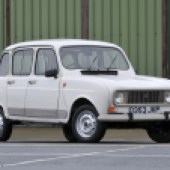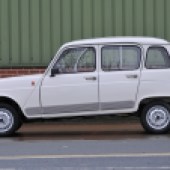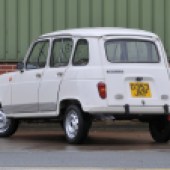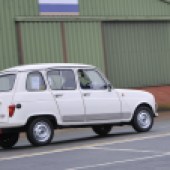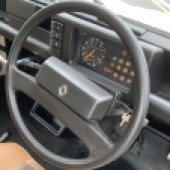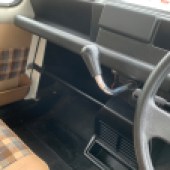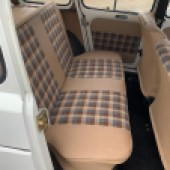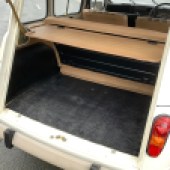Renault’s answer to the 2CV still makes for an intriguing choice on today’s classic market. Here’s how to buy a great Renault 4
Words: Paul Guinness Images: Paul Wager
Arriving in 1961 as arguably the closest rival to the big-selling Citroën 2CV, the new Renault 4 took the concept of a front-wheel drive utility car and developed it for extra versatility. Innovations included a five-door hatchback body style (revolutionary for the time), enabling the Renault to be used as a small estate or van when the need arose. Suddenly, the 2CV looked dated by comparison.
Renault chief, Pierre Dreyfus, was proud of his company’s latest offering, describing it as a “blue jeans car” – a model that, like the famous denim garment, could be both fashionable and practical. appealing to large numbers of people. And he was right, with the French – plus much of Europe and even South America – taking the R4 to their hearts, with over eight million sold in total.
A van version was planned from the start, with the Renault 4’s front-wheel drive and low, flat floor being ideal for creating a large cargo area. The passenger cars also benefited from the layout, with any Renault 4 providing ample room for all the family and their belongings, while typically French suspension settings aided long-distance comfort. The choice of engines available in the Renault 4 grew over the years, from the original 747cc (if we ignore the short-lived 603cc Renault 3 derivative) through to the 1108cc version used in the (34bhp) final-spec GTL.
The Renault 4 disappeared from UK showrooms at the end of 1986, but enjoyed a further six years of sales in France. If you fancy one now, what should you be looking for?

Bodywork
The Renault 4 uses a separate chassis, which needs to be in decent condition. It’s particularly prone to rot where the rear suspension attaches, with corrosion hiding in a double-skinned section just to the rear of the inner suspension mount. Your view is blocked by the damper, which means the rot can only be seen from directly underneath. Check for previous patch repairs, as these vary hugely in terms of quality; a thorough job will involve removing the rear suspension, fuel tank and much of the interior, and then welding in new metal. The area around the outer rear suspension mounts is less prone to rot but still needs checking, as repairs are tricky with the body in situ.
Brand new galvanised chassis are available from De Franzose of Germany but they cost around €1980 including taxes (£1697 at the time of writing). They also need collecting, as shipping isn’t available.
Renault 4 floorpans also rust, but they’re easy enough to inspect – particularly with the rear seat removed. Corrosion can take hold between the rail and the floorpan, and you should check carefully around the sill in front of the rear dogleg. At the front, lift the floor covering and have a poke around. Repair panels are available from Der Franzose, as well as sill and chassis sections, allowing for high-quality repairs if your budget allows.
Body-wise, assuming you’ve already checked the sills whilst inspecting the chassis, you should pay particular attention to the car’s front and rear wings, which are very rust-prone. Brand new wings are available from various European specialists, with De Marco Parts of Italy selling fronts for only €54 (just over £46) each, while the A-panel section that fits at the back of each one will set you back less than €30 (under £26). Lower rear wings are also available for the same price as front wings, while complete bonnets, doors and so on can usually be sourced from European classic Renault specialists.
The bonnet is easy to check for rust as it’s such a large, simple section. While you’re there, carefully look along the base of the windscreen, as the seals can trap water and cause rot.
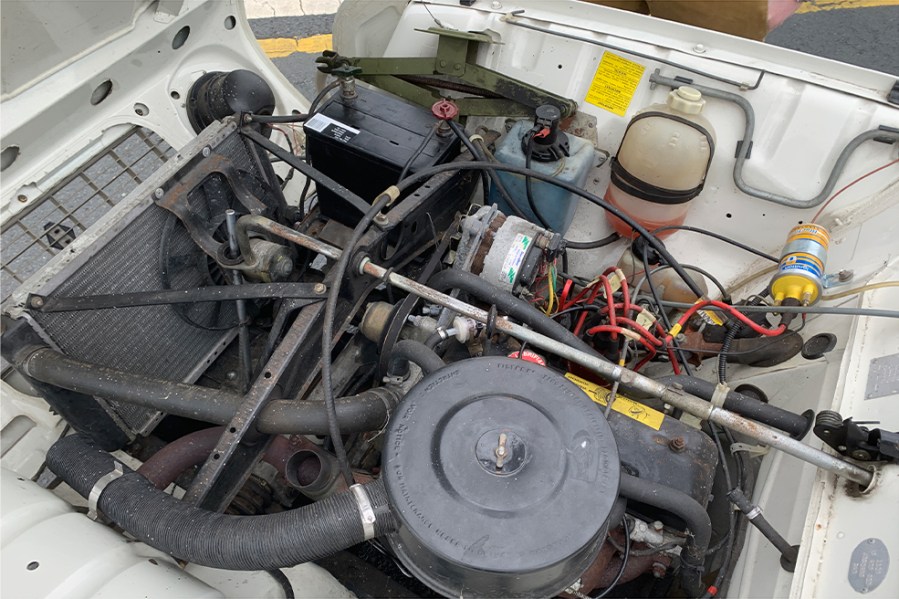
Engine and transmission
Whichever engine is fitted to the Renault 4 you’re thinking of buying, it’s a hard-wearing unit capable of high-mileage reliability when maintained well. If you’re buying a GTL, you could find that the 1108cc engine has burned an exhaust valve due to heavy use, though most examples will be fine. Even on late-model versions, a petrol additive or lead substitute is recommended.
When removing the oil filler cap on any Renault 4, the valve gear is visible – it could be covered in sludge on a badly maintained engine, so make sure you check. Any mayonnaise-like ‘goo’ means there’s water in the oil and vice-versa, but simply changing the head gasket may not be enough of a cure. When removing the head, it should be carefully twisted off (not lifted straight up) to avoid damaging the liners.
Despite official advice when the 4 was new, it’s important that you change the coolant every couple of years to prevent it clogging up and overheating, as well as causing damage to the engine liner seals. Timing chain rattles are common, but it’s rare for the chain to fail.
Unless you’re buying a rare early car, your Renault 4 will come with a four-speed all-synchro gearbox that’s generally tough and reliable. If the clutch feels heavy or is sticking, it’s likely to be because the shaft between the external clutch lever and the release fork has seized, but it should be easy enough to free off.
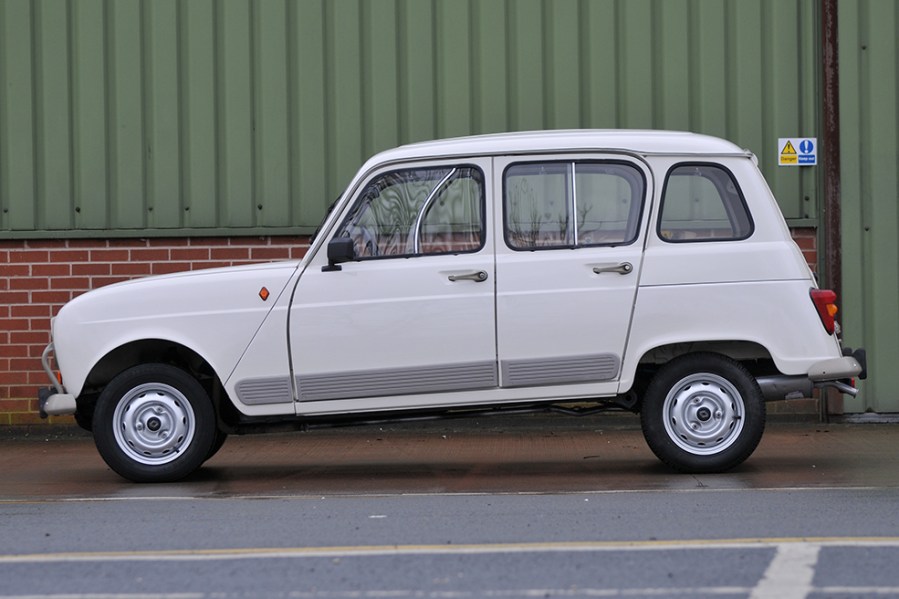
Suspension, steering and brakes
With the Renault 4 being lightweight and fairly low on power, it’s not exactly putting a strain on its running gear. With the right level of maintenance, everything lasts well – but when things do fail, the good news is that mechanical parts aren’t expensive.
When it comes to the R4’s long-travel independent torsion bar suspension set-up, you should carry out the usual checks for leaks and general wear. Bear in mind that if the torsion bars are damaged or require adjustment, this is a job that requires a specialist tool and is usually left to the experts. The rear dampers are mounted horizontally and it’s important that only authentic Renault 4 units are used as their rebound rate is around twice the compression rate; experts warn that fitting ‘normal’ dampers could result in air bubbles around the valves, preventing them from damping and leading to wheel vibration.
The Renault 4 is generally easy to work on. If you’re faced with fitting a new clutch, you need to unbolt the steering rack – and it’s important that both bolts are replaced, as reused bolts can shear off later on. The rack and pinion steering is responsive and pleasant to use, as well as being robust; if its feels slack or unusually vague, you could be looking at a new steering rack. When inspecting any car for sale, carefully check the driveshaft gaiters as they’re prone to splitting with age and will let in dirt.
The all-drum braking system (front discs arrived later on the GTL) is simple enough, but you should still check for leaks and listen out for any rubbing or grinding sounds. Sets of front brake shoes start from less than €26 (around £22) at Der Franzose, although you can pay more if you want the best quality.
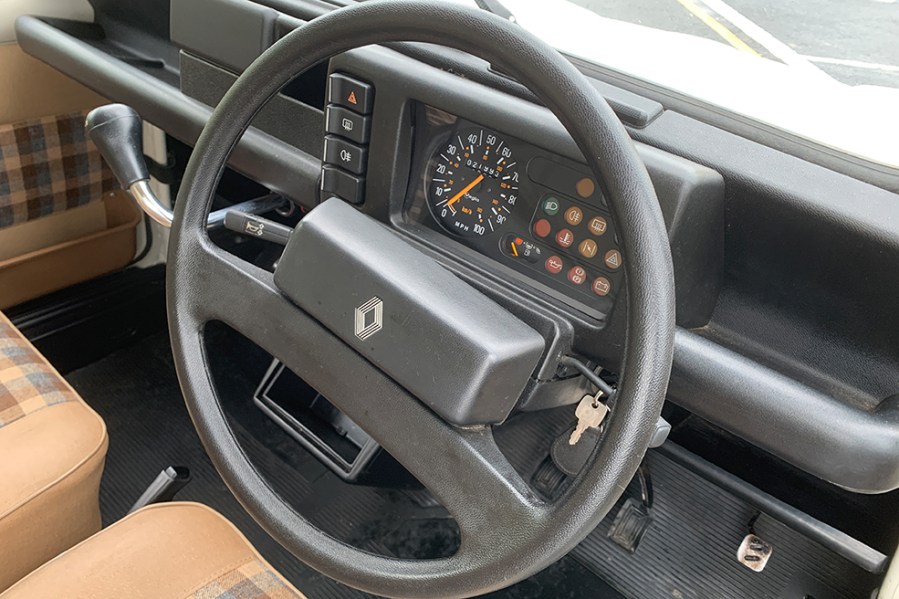
Interior, trim and electrics
The Renault 4 was designed as a utility car, which means a tough and practical interior rather than a luxurious one. The vinyl seats of pre-GTL cars are particularly hard-wearing, with the fabric upholstery of the GTL often wearing thin by now. The driver and front passenger seats are both the same, so swapping them over is an easy job.
Replacement seat covers are all available from European suppliers, as are new door cards and floor mats. De Marco Parts of Italy offers vinyl and cloth seat covers to original-looking spec for most Renault 4s, priced at less than €400 (£343) per set. Door cards tend to cost around €250 (£215) for a set of four.
With minimal instrumentation and a lack of luxury equipment, the Renault 4’s electrics are as basic as they come. It’s essentially a case of making sure everything’s working as it should.
Renault 4: our verdict
As one of Europe’s first proper hatchbacks, the Renault 4 was an influential model, prompting Citroën to come up with the Dyane six years later. Early reviewers of the R4 were so confused by the concept, they often referred to it as an estate; yet here was a five-door family hatch for those buyers seeking versatile utilitarian motoring. Even in late-model GTL guise, with its extra power and the ‘luxury’ of cloth seats, the Renault 4 lost none of its basic appeal or typically French charm.
Although values have risen in recent years, the Renault 4 continues to offer decent value compared with other iconic people’s cars. And with low running costs combined with decent parts availability (even if some items have to be ordered from mainland Europe), it’s a straightforward ownership proposition. Buy as rust-free an example as possible and simply enjoy a Gallic classic that’s perhaps a little less predictable than a 2CV.
Renault 4 values widely, from project cars at less than £2000 to extremely well-presented examples nudging £10,000, or more in the case of a genuine concours contender. Budget £5000–6000 and you should be able to pick up a solid and presentable example that’s ready to enjoy next spring, while at auction you might be able to snap one of for £4000–4500 if it needs only minor cosmetic attention. At the upper end of the auction price range, a 41,000-mile 1985 GTL sold last March for more than £9100, proving there are willing bidders for quality examples.
If you’re not too fussed about having a genuine right-hand drive UK-market model, you might consider a left-hooker – so don’t be afraid to check out the dealers and auction houses in mainland Europe. Over in France, a superbly restored 1982 4TL was guided at €10,000–15,000 in an auction last summer, and ended up changing hands for €10,980 (just over £9400). Early cars can fetch more, depending on their history, condition and rarity.
Renault 4 timeline
1961
Official launch of 747cc Renault 4 (and 603cc Renault 3 sibling) at the Paris Motor Show, plus higher-trim 4L
1962
Renault 4 Super introduced with same 747cc engine but extra power (32bhp); Renault 3 discontinued
1963
845cc engine available on some versions; Sinpar four-wheel drive models launched in France
1965
Base model rebadged as Renault 4 Luxe
1967
Minor facelift brings new front-end look a fully-synchro four-speed ’box to replace old three-speed
1968
Plein Air open-top recreational version introduced in France with no doors or side windows (discontinued after two years)
1970
Electrics upgraded from 6v to 12v
1973
Renault 6 gearbox becomes standard fitment
1974
Second facelift brings another new front-end look and extra plastic trim
1978
Renault 4 GTL receives 1108cc engine
1982
Renault 5 instrument panel now fitted as standard
1983
Front disc brakes become standard equipment
1986
Official UK imports/sales cease
1986
845cc engine replaced by 956cc unit in France
1992
French Production ends in December with a 1000-unit ‘Bye-Bye’ limited edition


